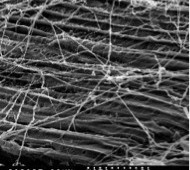Bioscriber, an online synthetic biology tutorial, debuts
Developed as a means of introducing the concept of DNA synthesis/synthetic biology to the general public and how it is used at the U.S. Department of Energy Joint Genome Institute (DOE JGI) and the Joint BioEnergy Institute (JBEI) for biofuels research, Bioscriber debuted on October 13, 2012 at the Berkeley Lab Open House. The initial… [Read More]


